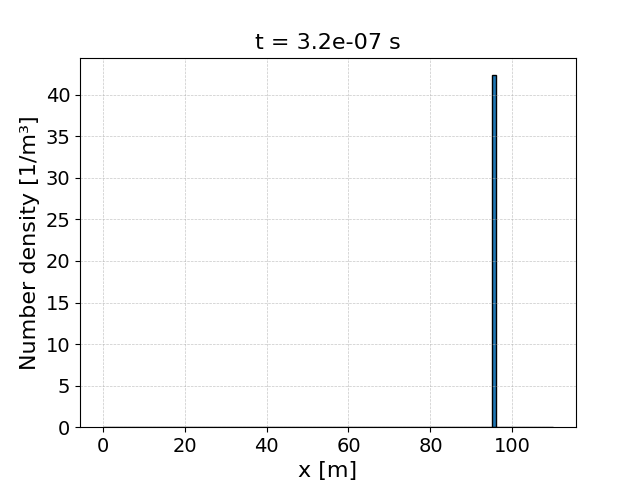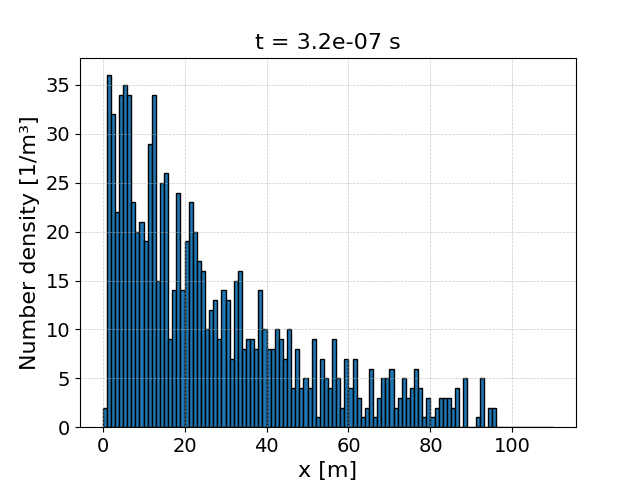Example 5: Collisions#
Collisional processes in EPOCH describe physics packages where incident particles interact with a background species, and significantly affect local background particles. When running a collisional process, both incident and background particles are re-sorted into cell-owned species-lists, in order to quickly identify these local particles.
The package test_process_collisions demonstrates this, and is of a similar
form to a recombination package. The incident particle has a constant trigger
cross section of 1e7 m², and the process destroys the incident particle when
activating. Separately, the code estimates how many background particles are
triggered each step, using the weight and trigger rate of the incident
particle. Background macro-particles are triggered until the number of real
background particles activated matches the expected number
of real particles triggering in the incident macro-particle. In
test_process_collisions, background macro-particles are sent to a secondary
species upon trigger.
This example has a similar setup to Example 4, where a relativistic, low-density electron bunch passes through a static background electron plasma. The incident bunch consists of 1e5 macro-electrons describing a number density of 1e3/m³. The background electron plasma is a uniform 100/m³ density, with 100 macro-particles per cell.
Only one example is provided with this setup:
example_5_0: Collisional process demonstration
Example 5.0#
The incident electrons start in the first cell, and move across the domain at
relativistic speed. A uniform density of background particles is present, and
the cross-section of test_process_collisions is also constant - hence, the
trigger rate is fixed for electrons in the incident species.
The physics package block takes the form:
begin:physics_package
process = test_process_collisions
incident = Electron_bunch
background = Background_electrons
secondary1 = Promoted_background
end:physics_package
The density of the incident bunch starts at 1e3/m³, and incident macro-particles are destroyed when the process is triggered. At the end of the simulation, the bunch density has dropped, and we see most incident electrons have been destroyed:

Since the background number density is initially uniform, and the reaction rate is constant, we expect an exponential decay pattern to occur for the spatial distribution of trigger locations. As background particles remain stationary both before and after promotion to the secondary species, we expect these secondary particles to show where reactions are taking place. Hence, we expect these to also follow an exponential distribution, which is what we see:

These secondary particles have been promoted from the background species, and we
can see this by plotting the Background_electrons number density. Here, the
exponential pattern from the Promoted_background species has been subtracted
from the initially uniform 100/m³ background density:
